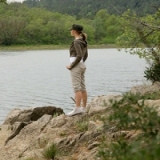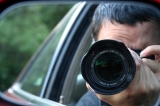- Forum
- General Discussion | Introductions | Off Topic Forum
- Photography General Discussion
- Would it still be considered a photograph...
Would it still be considered a photograph...
-
 Topic Author
Topic Author
- Harper Coswell
- Has the Hang of it
-
- Canon 60D
- Followers: 46
- Posts: 91
-
Points:
894
Post #426314
-

- effron
- Newbie
- Followers: 1623
-
Points:
129640
-

- Carry
- Photography Hooked
-
- Nikon D700
- Followers: 184
- Posts: 510
-
Points:
7835
-

- Baydream
- Moderator
-
- Canoni/60D/70D/5DmkIII
- Followers: 388
- Posts: 11185
-
Points:
7278
Post #426358
Shoot, learn and share. It will make you a better photographer.
fineartamerica.com/profiles/john-g-schickler.html?tab=artwork
Post #426370
A photo illustration may often be a montage etc., and usually in photojournalism indicates the photo was altered, compared to a photograph that recorded what was actually there when the picture was taken. People and objects cannot be removed from a photo for it to meet good sports or photojournalistic standards.
However I also do art prints, and do what are called alternate processes; I don't know if those would be called photographs but are considered to be photographic processes. I think it depends on how you use a photo and if what you do is acceptable for a particular purpose.
Sharon
Post #426377
Photo manipulation is the application of image editing techniques to photographs in order to create an illusion or deception after the original photographing took place. (As good a definition as any, from Wikipedia.)
Rob
-

- Uplander
- The Lounger
-
- Nikon D800
- Followers: 216
- Posts: 1324
-
Points:
12628
-

- Kayce
- Lone Wolf
-
- Canon 5D Mark III
- Followers: 50
- Posts: 107
-
Points:
605
Post #426493
Kayce wrote: Image/photo? Same thing. It's the purist who might have something to say.
No that is not the case as Sharon pointed out. A drawing is an image, so is it a photograph as well?
One is merely an illustration, the other is a record. If you remove things from a photograph then it no longer is just a recording of a subject. Would you be fine with photojournalists subtracting, or adding things into their images to make the story pop?
I am not saying in any way that there is anything wrong with doing this, as I have done it many times to rid my images of unavoidable clutter. But to think that seeing one way as being an actual photographic record, and the other not being so as being a purist, is not correct either.
The only true and real adjustments acceptable for a pure shot is to adjust flaws in the capture itself. Such as brightness, tonality, cropping, and sharpness. When you start to manipulated parts of the scene in the image, it becomes artistic illustration. But in truth we do manipulate the reality of the scene just by the way we shoot it as well, when we choose to not shoot it fully in its relation to the world surrounding it. Our images/photographs are merely an example of how we see a given part of the world around us at a moment, nothing more, nothing less.
Post #426505
I agree, if we're talking about shooting for our own amusement, or to record a particular moment in space and time for posterity. But if we shoot to share our images with others, whether for commercial purposes, for competition, or for artistic expression, then we add the dynamic of performance into the mix. That dynamic is worth exploring, because we are then not simply sharing how we see the world around us in that moment, but shaping it to have a particular effect on others.
-

- effron
- Newbie
- Followers: 1623
-
Points:
129640
Post #426508
To the OP, call it what you want...geesh....
Why so serious?
-

- Alan Nunez
- Snapobsessed
-
- Nikon D3 & D2x
- Followers: 88
- Posts: 391
-
Points:
0
Post #426518
-
 Topic Author
Topic Author
- Harper Coswell
- Has the Hang of it
-
- Canon 60D
- Followers: 46
- Posts: 91
-
Points:
894
Post #426549
Post #426624
Harper Coswell wrote: You all gave me much to think about. Thank you!
A few other things to think about, just for fun...
When we experience a moment in space and time, we can't divorce what we see from the data we're acquiring with our other senses: the sound of the surf, the wind rustling the leaves, the cry of birds, the sun beating down, other people around us, even the feel of the camera as we take the shot. Then there are our emotions, and our own projections on the scene. There's possibly even a quantum physics aspect to it, in that our very observations of a subject may change the reality of it.
Fun stuff aside, the first edit of the image is mental: We experience something on multiple levels that moves us to capture the moment, but we aren't really capturing the "moment," are we? Even if we strip out all of the other influences present, and only focus on our sense of sight, we're "arranging" the scene, even if we simply move this way or that to avoid a garbage can. If the garbage can is a prominent object at the scene, then by avoiding it in composing the shot, we've already edited the photo before we push the shutter release. But even without such considerations, the truth is that every time we take a shot, we're reducing the 3-dimensional image to two dimensions. We're "dumbing it down," and it becomes something else entirely. It's now a poor simulation of the original. If it was awe-inspiring to see it in 3 dimensions, it's often disappointing to view it with one dimension removed from it. So, what do we do to communicate that awesomeness to someone who wasn't there?
Well, we can manipulate it with settings. The second edit involves the internal default camera settings, plus the settings we choose, the white balance, the ISO, the F-stop, etc. As an example, I've taken shots of the moon on nights in which the sky had no stars visible to the naked eye, and not even in live view at 300mm zoom, doubled. Later, looking at the shot in 100% view in PS, the screen is full of stars. The "moment", then, has had objects added to it, just because of the settings I used.
The third edit is working with the RAW image settings. I can enhance it, edit for clarity, change the white balance, slide the vibrance, saturation, bump up the exposure or bump up the blacks, and on and on - not to mention choosing to add HDR effects. I may end up with an awesome image when I'm done, but is it a faithful rendition of the original experience?
My question is a simple one, but I don't believe there is an obvious answer:
Is there an editing line that photographers are faced with in every shot, on one side of which is integrity and ethical treatment of the subject, and on the other side of which is dishonesty, deceit and manipulation?
Rob
-
 Topic Author
Topic Author
- Harper Coswell
- Has the Hang of it
-
- Canon 60D
- Followers: 46
- Posts: 91
-
Points:
894
Post #427050
- Forum
- General Discussion | Introductions | Off Topic Forum
- Photography General Discussion
- Would it still be considered a photograph...
Latest Reviews
Nikon’s retro-looking Nikon Zfc is anything but retro. Under its classic body is a host of features and amenities that make it a worthwhile compact mirrorless camera for 2024.
The Canon EOS R50 is one of the newest R-system cameras from Canon. Is it worth your money? Find out all the details you need to know in this comprehensive review.
The Sony FE 70-200mm f/2.8 GM OSS II is Sony’s flagship mirrorless zoom lens. As such, it’s loaded with features and has a top-shelf build quality that makes it a top pick!
The Leica SL2-S is an attractive, premium mirrorless camera with photo and video specs that are sure to impress. And with the legendary Leica name, you know this camera exudes quality!
Forum Top Posters
-
1TCav 9 posts
-
2CharleyL 6 posts
-
3Razky 5 posts
-
4Randy Shaw 5 posts
-
5Matt VanDyke 4 posts
-
6Hassner 4 posts
-
7Prago 4 posts
-
8EOS_Fan 3 posts
-
9Ira Weber 3 posts
-
10Steve Zahra 3 posts
Latest Articles
Nikon’s retro-looking Nikon Zfc is anything but retro. Under its classic body is a host of features and amenities that make it a worthwhile compact mirrorless camera for 2024.
Moving from taking snapshots of your dog to creating beautiful images doesn’t have to be that difficult! Use the tips outlined in this dog photography guide, and you’ll get better results in no time.
Acrylic print photos are a beautiful way to display your favorite images. But they don’t come without some questions. Get all the answers you need about this medium in this guide!
Where do you get your landscape photography inspiration? Is it from masters like Ansel Adams? Or perhaps viewing art from other genres? We’ve got these and a few other sources for you to check out!
The Canon EOS R50 is one of the newest R-system cameras from Canon. Is it worth your money? Find out all the details you need to know in this comprehensive review.
Too often, affordable online printing companies don’t meet your expectations of what a print should look like. But there are some choices that combine affordability with superb quality!
Self-critique is an important component of your journey to improving as a photographer. Use these simple tips about critiquing your work as a means to make faster progress with your art.
With these easy iPhone photography tips, you can maximize the functionality of your iPhone’s camera and get much-improved results for portraits, landscapes, and any other genre!















